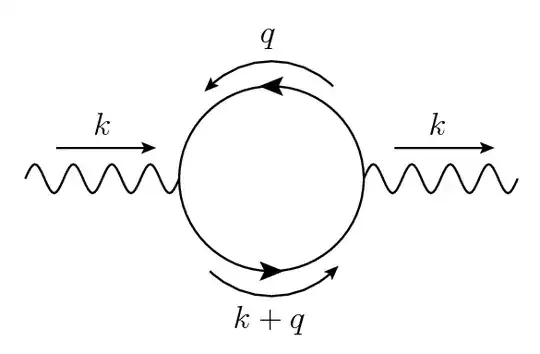The one-loop self-energy of the photon,
 ,
,
when contracted with the external momentum $k^\mu$ gives the following difference of integrals where the integration variable in the first term is shifted compared to the second term.
$$ k_\mu\Pi^{\mu\nu}(k) \sim \int\frac{d^4q}{(2\pi)^4}\ \left\{ \frac{(q + k)^\nu}{(q+k)^2-m^2} - \frac{q^\nu}{q^2-m^2} \right\} .$$
The argument for this result to be zero is based on the fact that a constant shift in the integration variable does not change the integral, which claim is in fact contingent on the assumption that the integral is convergent or at most logarithmically divergent.
In our case, the integrals are cubically divergent, which is bad. In fact, if you follow the calculations in Schwartz Ch.30 p.625, you will find that the above difference is quadratically divergent. With a cutoff $\Lambda$, we find that
$$ k_\mu\Pi^{\mu\nu}(k) \sim \lim_{\Lambda \to \infty} \frac{ik^\nu}8 \Lambda^2 + \cdots \,.$$
Why do we then claim that the Ward identity is satisfied?